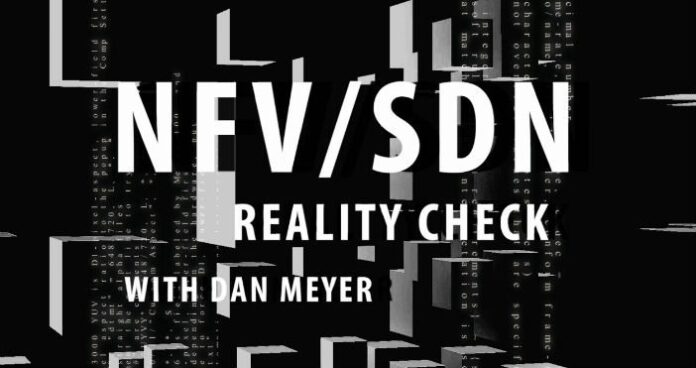On this week’s NFV/SDN Reality Check, we look at some top news items from across the space as well as speak with Quortus to get a primer on mobile edge computing
On today’s show we have an interview with Riki Dolby, director of engineering at Quortus to get a primer on mobile edge computing. But first, let’s take a look at some of the top headlines from across the telecom-related NFV, SDN, cloud and software space from the past week.
I recently attended the Open Networking Summit in Santa Clara, California, where the obvious topic of the event was the use of open source technology by telecom operators as they move forward with their software deployments using software-defined networking, network functions virtualization and cloud technology.
During a keynote panel, Chris Rice, VP for advanced technologies, platforms and architecture at AT&T Labs, said the open source community was maturing enough to make it possible for the telecom giant to rely more on such platforms in support of its significant push into software control of its network. Rice explained the carrier had about 100 developers working in the OpenDaylight area, sponsored academic research and was working internally on its network cloud and automation platform.
Rice also touted the carrier’s recently launched enhanced control, orchestration, management and policy project, which was at 8 million lines of code and growing.
Michael Bushong, VP of product management for Brocade’s Software Networking Business, said from a vendor perspective the move towards open source was “a big change,” and that instead of focusing on making “your stuff sticky, it’s now how to make yourself easy to replace.”
“That’s a tough business model to sell to executives,” Bushong explained. “But, that’s where we are going and it requires a new way to look at the business. It disrupts incumbency and forces us to compete on a best of breed, which is good for competition.”
Gene Reznik, group technology officer at Accenture’s Communications, Media and Technology division, said software was a way for telecom operators to further differentiate their services from both their traditional competitors and over-the-top players. In addition, Reznik built on Bushong’s comments in noting the economics of software are very different when compared with hardware, made even more so when dealing with open source software.
Focusing in on workforce challenges, Jim Zemlin, executive director at the Linux Foundation, said the move towards open source software is forcing the industry to re-examine its employment needs. Zemlin explained companies can use open source software to “leverage” their employment needs in a “people game,” adding developers matter in the process.
Also this week, CenturyLink announced plans to increase capacity at four data centers through the first half of this year. The telecom operator said expansion plans were based on growing demand for “flexible hybrid IT capabilities such as colocation and cloud consumption,” and build on its move last year to add 14 megawatts of capacity at eight data centers.
CenturyLink claims it has completed 39 data center expansion projects over the past five years, including the addition of 11 new data centers. The company said it currently offers 2.62 million square feet of “gross raised floor space throughout North America, Europe and Asia Pacific.”
CenturyLink last year announced it was looking at strategic alternatives for its data center and colocation business operations in a move analysts noted could include further breaking apart of CenturyLink’s operations. The company said at that time it was looking at a “full range of options,” including a partnership or joint venture, or the sale of all or a portion of the data centers.
During the company’s most recent quarterly results conference call in early February, CenturyLink management said it was still moving through the process.
“This is an ongoing process that could result in any one of these outcomes, including the potential sale of a portion of or all of our data center business,” explained CenturyLink CEO Glen Post. “Also, as we have said, we could ultimately choose to retain these assets and related operations. As we outlined in November, we believe, in the macro trends of the data center location industry and the importance of the service in our hybrid IP solutions, but we do not believe we must own the colocation facilities to provide the full range of services our customer needs to manage variety of functions. We expect to fully engage interested parties within the next two weeks or so.”
Thanks for joining us on this week’s NFV/SDN Reality Check. Make sure to check us out again next week when we will have more news from across the NFV, SDN and cloud space, and are scheduled to speak with PlumGrid on the deployment, opportunities and challenges in OpenStack, SDN and NFV.
Bored? Why not follow me on Twitter

